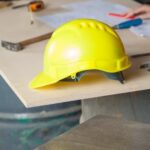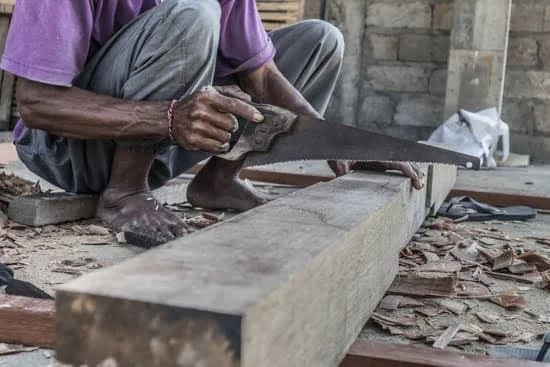Are you wondering how to correct missaligned glue ups in woodworking? Glue ups are a common technique in woodworking projects, but they can often result in misaligned pieces that can be frustrating to deal with. In this article, we will explore the common problems that arise with glue ups in woodworking and provide a comprehensive guide on how to correct missaligned glue ups.
Ensuring that wood pieces are aligned properly during glue ups is crucial for the success of any woodworking project. Misaligned glue ups can affect the aesthetics and structural integrity of the final piece, so it’s important to understand the causes of missalignment and how to rectify them.
In this section, we will delve into the importance of aligned glue ups in woodworking projects, and discuss the various issues that can arise when pieces are not properly aligned. We will also introduce the key areas that will be covered in this article, including identifying the causes of missaligned glue ups, step-by-step guides on correcting them, tools and techniques for realignment, tips for preventing missaligned glue ups in future projects, and case studies of successful corrections.
So let’s dive into the world of wood glue-ups and how to ensure your next project is perfectly aligned.
Understanding the Importance of Aligned Glue Ups in Woodworking Projects
Woodworking projects often involve joining pieces of wood together using glue, creating strong and durable bonds. However, one common problem that woodworkers encounter during the glue-up process is misaligned joints. Misaligned glue ups can result in crooked or wobbly furniture, uneven surfaces, and overall poor craftsmanship. Understanding the importance of aligned glue ups is crucial for achieving professional-looking and structurally sound woodworking projects.
The alignment of glued wood pieces is essential for ensuring a seamless and sturdy joint. When wood pieces are not properly aligned during the glue up, it can lead to weak bonds and compromised structural integrity. Additionally, misaligned joints can result in visible gaps or uneven surfaces, detracting from the aesthetic appeal of the finished piece. Whether you are working on cabinets, tabletops, or other woodworking projects, achieving perfectly aligned glue ups is essential for high-quality results.
There are several key factors that contribute to misaligned glue ups in woodworking projects. Understanding these causes can help woodworkers identify issues early on and take preventative measures to ensure proper alignment during future projects. Some common causes of misaligned glue ups include inaccurate measurements and markings, inadequate clamping pressure, uneven surfaces, and improper adhesive application techniques. By recognizing these causes, woodworkers can take proactive steps to avoid misalignment issues upfront.
- Inaccurate measurements and markings
- Inadequate clamping pressure
- Uneven surfaces
- Improper adhesive application techniques
Identifying the Causes of Missaligned Glue Ups
When it comes to woodworking, achieving perfectly aligned glue ups is crucial for the structural integrity and aesthetic appeal of the final product. However, even experienced woodworkers can encounter issues with misaligned glue ups. Understanding the common causes of this problem is essential in order to address and correct it effectively.
One of the main causes of missaligned glue ups in woodworking is improper clamping. When pressure is not evenly distributed across the glued surfaces, it can result in misalignment. Another common cause is using insufficient or unevenly spread adhesive, which can lead to gaps between the glued pieces. Additionally, not having a flat and smooth surface before gluing can also cause alignment problems.
To prevent misaligned glue ups, it’s important to carefully prepare the surfaces to be joined by ensuring they are flat and clean. Using high-quality clamps and evenly distributing pressure during clamping is also essential. Furthermore, applying an adequate amount of adhesive and spreading it evenly on the surfaces will help prevent misalignment issues.
| Common Causes | Preventive Measures |
|---|---|
| Improper Clamping | Use high-quality clamps and evenly distribute pressure during clamping. |
| Insufficient or Unevenly Spread Adhesive | Apply an adequate amount of adhesive and spread it evenly on the surfaces to be glued. |
| Uneven Surfaces | Carefully prepare the surfaces by ensuring they are flat and clean before gluing. |
By being aware of these potential causes and implementing preventive measures, woodworkers can significantly reduce the likelihood of experiencing missaligned glue ups in their projects.
Step-by-Step Guide on How to Correct Missaligned Glue Ups in Woodworking
Woodworking projects often involve the process of gluing pieces of wood together to create intricate and sturdy structures. However, one common problem that woodworkers encounter is missaligned glue ups, which can result in uneven surfaces and weak joints. In this section, we will provide a step-by-step guide on how to correct missaligned glue ups in woodworking, ensuring that your projects turn out perfectly aligned and structurally sound.
To correct missaligned glue ups in woodworking, follow these steps:
1. Identify the misalignment: Before taking any corrective action, carefully inspect the glued wood pieces to determine the exact areas where the misalignment has occurred.
2. Disassemble the pieces: Using a mallet and a chisel or a putty knife, gently separate the misaligned wood pieces. Take care not to damage the wood during this process.
3. Clean off old glue residue: Use a scraper or sandpaper to remove any remaining glue residue from the separated wood pieces. This step is crucial for achieving a clean and seamless reassembly.
4. Realign the pieces: Once the old glue is removed, carefully realign the wood pieces to their intended position. Use clamps to hold the pieces together firmly while allowing for any adjustments to be made.
5. Re-glue and clamp: Apply a thin, even layer of wood glue to both surfaces that will be reconnected. Then use clamps to secure the pieces together, ensuring even pressure across the entire surface.
By following these steps and using precision tools such as clamps and scrapers, you can effectively correct missaligned glue ups in your woodworking projects and achieve seamless, perfectly aligned joints.
Remember, taking your time during each step of this process is crucial for achieving high-quality results in your woodworking projects.
Tools and Techniques for Realigning Glued Wood Pieces
When it comes to correcting misaligned glue ups in woodworking, having the right tools and techniques is crucial. There are several methods that can be used to realign glued wood pieces, depending on the severity of the misalignment. In this section, we will explore some of the most effective tools and techniques for realigning glued wood pieces.
Clamps
One of the most common tools used to correct misaligned glue ups is clamps. Clamps can be used to apply pressure to the misaligned sections of the wood, helping to straighten them out. It’s important to use enough clamps to evenly distribute pressure across the entire glued area. Additionally, using cauls – wooden strips placed between the clamps and the wood surface – can help prevent denting or marring of the wood during realignment.
Hand Planes and Jointers
For smaller misalignments or areas with excessive glue squeeze-out, hand planes and jointers can be used to remove excess material and level out the surfaces. Careful use of these tools can help smooth out any imperfections in the alignment of glued wood pieces.
Heat and Moisture
In cases where misalignment is slight or there are gaps between glued surfaces, applying heat or moisture can help make the wood more pliable. This can allow for small adjustments to be made to correct alignment issues. Steam from a clothes iron or a damp cloth placed over the misaligned area can make the wood more flexible and easier to manipulate.
By utilizing these tools and techniques, it is possible to correct many types of misaligned glue ups in woodworking projects. However, prevention is always preferable to correction, so it’s important to take steps to avoid misalignments in future projects.
Tips for Preventing Missaligned Glue Ups in Future Projects
Preventing missaligned glue ups in future woodworking projects is essential for ensuring the quality and durability of your creations. By taking the necessary precautions and using the right techniques, you can minimize the chances of encountering this common problem.
One important tip for preventing missaligned glue ups is to invest in high-quality clamps that provide even pressure across the entire surface of the glued pieces. This will help ensure that the pieces are held together securely and maintain proper alignment during the drying process. Additionally, using cauls – which are straight and flat pieces of wood or metal – can help distribute pressure evenly and prevent misalignment.
Another key factor in preventing missaligned glue ups is proper preparation of the wood surfaces before applying the glue. Make sure to carefully joint and plane the edges of the wood to create clean, straight surfaces that will fit together seamlessly. Additionally, using a reliable wood glue with a long open time can give you more flexibility to adjust any misalignments before they become permanent.
Furthermore, it’s important to work in a well-organized and clean environment when doing glue ups. This will help minimize distractions and reduce the likelihood of making mistakes that could result in misalignment. Taking the time to properly set up your workspace and double-checking your measurements before applying any glue can go a long way in preventing missaligned glue ups.
| Prevention Tips | Benefits |
|---|---|
| Invest in high-quality clamps | Ensure even pressure and proper alignment during drying process |
| Use cauls for even pressure distribution | Prevent misalignment during gluing process |
| Properly prepare wood surfaces before gluing | Create clean, straight surfaces for seamless fit |
By following these tips, you can significantly reduce the risk of encountering missaligned glue ups in your future woodworking projects. And should any misalignment occur despite these precautions, knowing how to correct it effectively will also be valuable knowledge for achieving perfectly aligned glue ups every time.
Case Studies of Successful Corrections of Missaligned Glue Ups
Woodworking projects can often be derailed by misaligned glue ups, causing frustration and potentially ruining hours of meticulous work. However, with the right techniques and tools, it is possible to correct missaligned glue ups and salvage your project.
Case Study 1: Misaligned Tabletop
One common issue in woodworking is a misaligned tabletop due to improperly glued wood pieces. In a recent project, a woodworker found that their tabletop had noticeable gaps between the boards after gluing. To correct this, they carefully marked the areas with misalignment and used a hand plane to shave off the excess wood until the gaps were eliminated.
This was followed by re-gluing the pieces together, ensuring proper alignment this time. The result was a perfectly aligned tabletop without any visible gaps.
Case Study 2: Uneven Cabinet Door
In another case, a woodworker faced an uneven cabinet door after glue up due to misaligned stiles and rails. To fix this issue, they used clamps to gently loosen the glued joints and then inserted thin shims into the gaps to realign the pieces. After ensuring proper alignment, they reapplied glue and clamped the door until the adhesive dried completely. The end result was a perfectly aligned cabinet door without any visible inconsistencies.
Case Study 3: Crooked Chair Leg
Lastly, a woodworking enthusiast encountered a crooked chair leg in their project caused by misaligned glue up. To resolve this issue, they carefully removed the existing adhesive using chisels and sandpaper before regluing the joint. By utilizing clamps and jigs to hold the pieces in place during drying, they were able to achieve proper alignment and straighten out the chair leg successfully.
These case studies demonstrate that correcting missaligned glue ups in woodworking projects is indeed possible with patience, precision, and the right tools. By understanding these techniques, you can salvage your projects from potential disaster and achieve perfectly aligned glue ups for stunning end results.
Conclusion
In conclusion, achieving perfectly aligned glue ups in woodworking projects is essential for the overall quality and durability of the finished piece. As highlighted throughout this article, understanding the common problems and causes of missaligned glue ups is crucial for identifying and correcting any issues that may arise during the woodworking process. By following a step-by-step guide on how to correct missaligned glue ups, woodworkers can effectively realign glued wood pieces using the right tools and techniques.
Furthermore, it’s important to note that preventing missaligned glue ups in future projects requires careful attention to detail, proper clamping techniques, and regular quality checks throughout the gluing process. By implementing these tips and best practices, woodworkers can significantly reduce the likelihood of missalignments occurring in their future woodworking endeavors.
Lastly, by learning from real-life case studies of successful corrections of missaligned glue ups, woodworkers can gain valuable insights and inspiration for addressing similar challenges in their own projects. With patience, practice, and a thorough understanding of how to correct missaligned glue ups in woodworking, artisans can elevate the overall craftsmanship and precision of their creations.
Frequently Asked Questions
How Do You Fill Gaps in Wood Glue Ups?
When filling gaps in wood glue ups, the key is to use the right amount of glue and apply pressure to close the gaps. This can be done using clamps or by tapping the wood with a mallet.
What Is Used During Glue Ups to Keep Boards Aligned?
During glue ups, wooden dowels or biscuits can be used to keep boards aligned. These joinery techniques help ensure that the boards are properly aligned before clamping them together.
How Do You Apply Wood Glue Evenly?
To apply wood glue evenly, it’s important to use a brush or roller to spread the glue across the surface of the wood. Ensuring an even coat will help create a strong bond between the pieces being glued together.

Hi everyone! I’m a woodworker and blogger, and this is my woodworking blog. In my blog, I share tips and tricks for woodworkers of all skill levels, as well as project ideas that you can try yourself.





